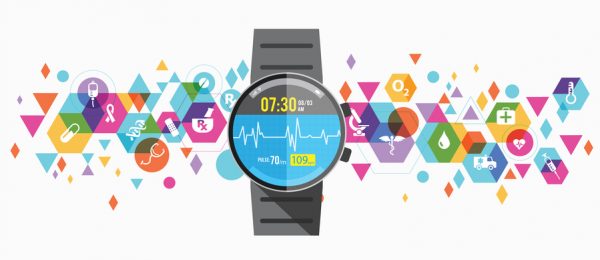
For years, the relationship between patients and healthcare professionals has hinged on trust. We, the professionals — whether doctors, nurses, dietitians, or therapists — invest time, effort, and countless hours in honing our skills. In return, patients look to us, expecting our guidance to improve their health. The agreement? Simple. We craft a plan. We discuss and agree. They follow their plan. The outcome? Hopefully better health. But this dynamic, seemingly straightforward, is far more nuanced than it appears.
Consider the concept of the “information prescription.” It mirrors a pharmaceutical one. Our advice, whether it’s about diet, rehabilitation, or mental well-being, is rooted in science. Just like a pill needs to be taken on time, our advice must be followed diligently to see results. When we ask a patient to exercise more or practice mindfulness, these aren’t vague suggestions — they are interventions, built from years of research. But here’s the catch: patients often don’t follow through.
Non-adherence is our Achilles’ heel

The Human Algorithm: What AI Can’t Replace in Pharma Engagement
At a time when AI is reshaping pharma, Reverba Global CEO Cheryl Lubbert explained in an interview why empathy, context, and ethics still require a human touch.
Just as patients often fail to take their medications properly — according to the World Health Organization up to 50% don’t — lifestyle advice faces the same challenge. How often do patients return, having ignored the agreed plan, perhaps inadvertently? Have they truly made the dietary changes, or slipped back into old habits? Did they try that mindfulness routine we recommended, or simply nod politely in the clinic?
We, as healthcare professionals, are left guessing. And that’s a problem.
In healthcare, every treatment — whether a drug or a suggestion — is based on a hypothesis. When we recommend a change, we expect a particular result. But without proper feedback, how can we know? Asking patients directly seems logical, but it’s a flawed system.
Self-reporting is fundamentally flawed
Patients, when asked, often misremember. They might overestimate their adherence or forget significant lapses. Human behavior is complex, shaped by daily pressures and emotional triggers. When they report back to us, it’s through the filter of memory — and memory, as we know, can be unreliable.
Also, sometimes, patients say what they think we want to hear. Who feels comfortable telling their health professional that they haven’t followed their exercise plan? Who wants to admit they’ve indulged in junk food, excess alcohol or smoking?
These challenges create gaps in our information. Gaps that make it hard to assess the true impact of our interventions. We know that accountability works. We also know that timely feedback is essential. These are the basis of coaching programs across multiple areas of life, from sports to acting.
How can we help patients when we only see them for such a small amount of time?
Patients leave the clinic, and we are blind. Logging food, exercise, or habits in an app might help, but we hit roadblocks. Users forget. They tire of the process. The data needed to provide actionable advice becomes incomplete, inaccurate, unreliable.
Enter wearables — smartwatches, smart rings, and soon smart glasses equipped with sensors will increasingly change the game. Unlike manual logging, these devices collect log data passively. Heart rates, eating patterns, physical activity, mood — all captured without any effort from the user.
Wearable technology can eliminate bias. It doesn’t rely on memory or being embarrassed to say something. The data is hard evidence. Jaw sensors tracking dietary behaviors don’t lie. Accelerometers tracking energy expenditure don’t forget. Patients, and with their permission, their caregivers, can see what’s happening — and when. This creates the extraordinary opportunity to extend electronic health records to the home.
But there’s more. Wearables don’t just tell us what a patient is doing — they can help us understand the context, the when and why. Are they overeating in social settings? Does stress derail their exercise routine? By linking behavior with context, we gain insights that self-reporting could never reveal.
This real-time data has another major advantage: immediate feedback. For example, it’s well known that rapid eating is associated with increased calorie consumption. If a patient is eating too fast, their device can alert them immediately. If they’re not reaching their activity goal, they’ll know instantly. Just as a car driver uses their dashboard for safe navigation, behavioral data can guide wearable users as they go through their daily life.
Better data also allows us, the professionals, to be more proactive and empathetic. If we notice a patient consistently struggling with exercise, we can adjust their plan. If stress is a constant roadblock, we can incorporate relaxation techniques. This adaptability makes treatment plans not just effective, but personalized. It’s also more efficient. Rather than dragging a patient back to the clinic for a routine follow up review, we can target our time to those who need more hands-on support. This includes those with disabilities, technophobes, or those who need a more bespoke approach.
Clearly there are challenges with new technologies. Up-front costs of devices, privacy, data quality, and unequal access are universal issues, especially for health technologies. As we move forward, these devices won’t just complement our practice — they’ll transform it.
Photo: exdez, Getty Images
Charles Nduka is the Founder and Chief Science Officer (CSO) of Emteq Labs, the market leader in emotion-recognition wearable technology. He is a leading facial musculature expert with over 20 years surgical experience, including 10 years as Consultant Plastic & Reconstructive Surgeon (Queen Victoria Hospital). Charles has an extensive background in research and development including clinical trials, has over 100 scientific publications and is the Medical Advisory Board chair for the charity Facial Palsy UK.
This post appears through the MedCity Influencers program. Anyone can publish their perspective on business and innovation in healthcare on MedCity News through MedCity Influencers. Click here to find out how.









